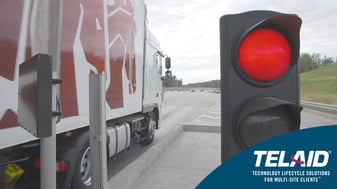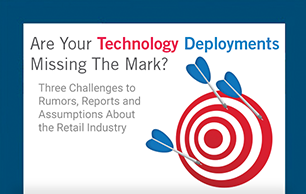 Protecting the perimeter of retail distribution centers is an increasingly critical endeavor in an era of rising crime. According to the National Retail Federation’s 2022 National Retail Security Survey, 31.6% of retailers reported theft at distribution centers (DCs) and 42% reported cargo stolen at stores.
Protecting the perimeter of retail distribution centers is an increasingly critical endeavor in an era of rising crime. According to the National Retail Federation’s 2022 National Retail Security Survey, 31.6% of retailers reported theft at distribution centers (DCs) and 42% reported cargo stolen at stores.
Gate systems and security personnel are commonly used at retail DCs to secure the area, manage cargo deliveries and protect the yard from unauthorized visitors. However, retailers continue to experience growing theft and loss at their DCs, leaving retailers wondering why their investments in security technologies fail to achieve the desired results.
Telaid has been working with several retailers over the past 12 – 24 months to deploy effective perimeter security solutions. In some cases, we’re designing the system for new construction facilities. In other cases, we’re retrofitting existing perimeter security systems to optimize performance. When it comes to security technologies for fulfillment and distribution centers, here are some of the most common pitfalls we see with existing and new perimeter security solutions.
Pitfall #1: Design shortfalls with electronic gate solutions
Too often, we see retailers deploy electronic gate solutions as a turnkey endeavor. However, effective gating solutions should be custom designed considering the particular facility, challenges, goals and other systems in place. As an example, pedestals featuring access control readers or keypads at entrances should consider usability. In many cases, these pedestals sit too low for drivers of large trucks to reach them from the driver’s seat. The result is that the driver must put the truck in park, open the door and descend from the driver’s seat to gain access. This is an inconvenient and time-consuming endeavor that can create queues and frustrate delivery drivers. A simple modification when installing pedestals can alleviate this problem. These and a host of other considerations should be addressed in the design process.
Pitfall #2: Lack of integration of security technologies
Too often we see security systems at retail DCs and fulfillment centers deployed as individual, siloed components such as video, access control, intrusion and gate systems. All of the components are there, but they are not integrated for data harmonization and optimal performance. Lack of integration yields suboptimal performance and reduces ROI on all physical security investments.
Pitfall #3: Lack of monitoring
While many retailers have security personnel on site to help protect the perimeter and respond to incidents, much of the value of electronic gate systems is the automation of security with emerging technologies. It’s impossible for personnel on site to be multiple places at one time. Cloud-based monitoring of electronic gate systems empowers security and/or operations teams to address problems and receive alerts regarding problems at multiple DCs or fulfillment centers. Remote monitoring is essential for consistent, streamlined perimeter security.
Pitfall #4: Lack of use of electronic gates
In a number of cases, we see that performance shortfalls result in such frustration that retailers simply abandon system usage either during peak traffic hours or altogether. Gates are left wide open to avoid slow-downs and frustration. However, this just invites theft and other unwanted activities on site. Is leaving the facility unsecured really the best option?
For all these reasons, Telaid is pioneering new territory in securing DCs and fulfillment centers with well designed, electronic gate systems that are fully integrated with other physical security solutions. With an eye on usability and scalable infrastructure, Telaid architects the system as a whole – not just multiple independent solutions. Because we are technology agnostic, we can work with existing systems, providing valuable guidance for both retrofits and greenfield installations.
We invite you to have a conversation with us and learn more about our solutions if you are experiencing pain security your distribution centers.




